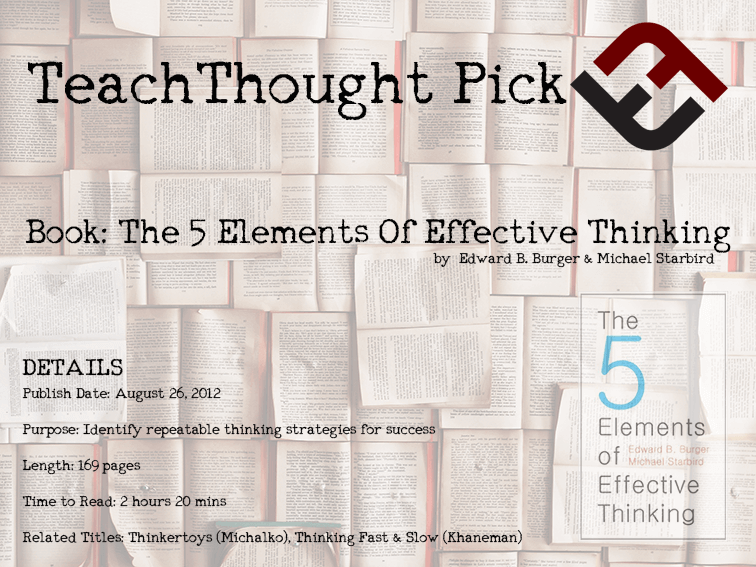
Book: The 5 Elements Of Effective Thinking
by TeachThought Staff
Title: The 5 Elements Of Effective Thinking
Publish Date: August 26, 2012
Purpose: Identify repeatable thinking strategies for success
Length: 169 pages
Time to Read: 2 hours 20 mins
Related Titles: Thinkertoys (Michalko), Thinking Fast & Slow (Khaneman)
Quote: “Brilliant people aren’t a special breed–they just use their minds differently.”
Disclosure: Links on this page may be affiliate links. You can read more here, but the gist is that we may receive a commission from any sale if you buy from a link we provide, so to keep that from happening you can simply search for any recommended titles without using the links and we won’t see one dirty penny.
Publisher Description
“The 5 Elements of Effective Thinking presents practical, lively, and inspiring ways for you to become more successful through better thinking. The idea is simple: You can learn how to think far better by adopting specific strategies. Brilliant people aren’t a special breed–they just use their minds differently. By using the straightforward and thought-provoking techniques in The 5 Elements of Effective Thinking, you will regularly find imaginative solutions to difficult challenges, and you will discover new ways of looking at your world and yourself–revealing previously hidden opportunities.
The book offers real-life stories, explicit action items, and concrete methods that allow you to attain a deeper understanding of any issue, exploit the power of failure as a step toward success, develop a habit of creating probing questions, see the world of ideas as an ever-flowing stream of thought, and embrace the uplifting reality that we are all capable of change. No matter who you are, the practical mind-sets introduced in the book will empower you to realize any goal in a more creative, intelligent, and effective manner. Filled with engaging examples that unlock truths about thinking in every walk of life, The 5 Elements Of Effective Thinking is written for all who want to reach their fullest potential–including students, parents, teachers, professionals, artists, leaders, and lifelong learners.”
